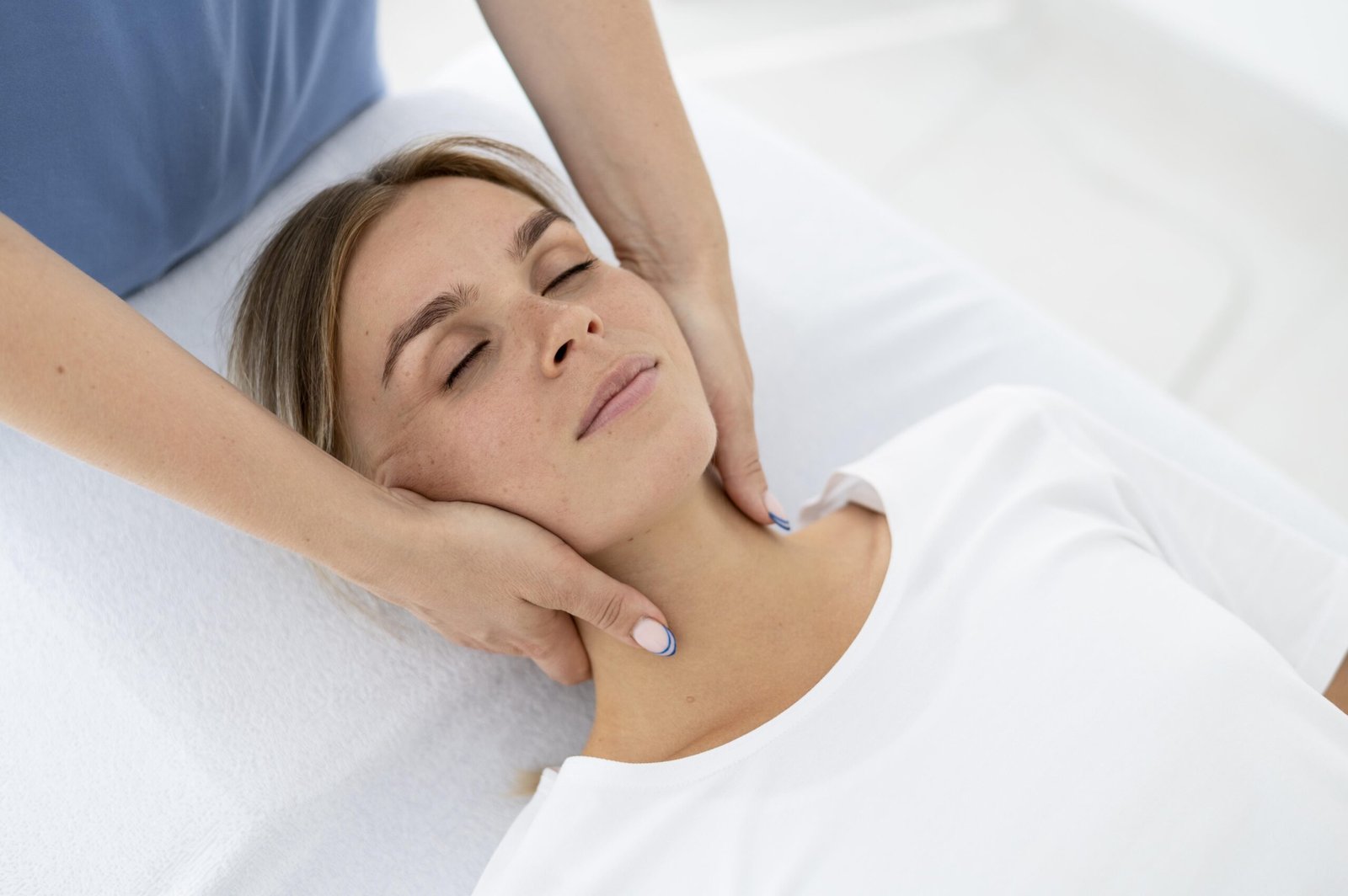Types of Headaches and Their Causes
Tension-Type, Migraine, and Cervicogenic
The three prevalent types of headaches are tension-type, migraine, and cervicogenic. Tension-type headaches often stem from stress, poor posture, or muscle strain. Migraines are more complex, with triggers including hormonal changes, certain foods, and environmental factors. Cervicogenic headaches (CEH) are attributed to dysfunction of the upper cervical spine which causes a referred pain to the head. There is considerable overlap of these headaches and people will often present with 2 or more types.
Recognising Cervicogenic Headaches
Cervicogenic headaches (CEH) are often one-sided, can be mild to moderate, and typically accompany neck pain. Patients may experience a loss of neck movement or pain triggered by certain neck movements. Prolonged strain from static activities like desk work or using mobile devices can exacerbate the symptoms. Neck trauma from accidents or arthritis in older individuals can also lead to CEH.
Identifying Headache Triggers
What Are Common Triggers?
Triggers are stimuli that provoke a headache, varying significantly among individuals. Common triggers include specific foods, stressors, and prolonged postures. Maintaining a headache diary can help individuals and practitioners identify these triggers, aiding in personalised treatment plans.
The Importance of Accurate Diagnosis
Correctly diagnosing the headache type is crucial as each requires different management approaches. A comprehensive examination helps distinguish between types and rules out other serious conditions. The cervical spine is closely evaluated to understand its influence on symptoms, as well as testing muscle function around the cervical spine to determine any dysfunctions present.
Physiotherapy Treatment for Headaches
Creating a Tailored Physio Plan
A physiotherapy plan involves educating patients about the cervical spine’s anatomy and biomechanics. Treatment strategies can include manual therapy techniques such as soft tissue release, joint mobilisation, and dry needling. Additionally, strengthening exercises target the supporting muscles around the neck and upper body to reduce strain, create better postural awareness, and improve the neck’s ability to tolerate load.
Implementing Modifications and Behavioral Changes
Desk workers and students are particularly susceptible due to improper workspace setups and extended periods of inactivity. Educating these individuals about proper ergonomics and the importance of regular movement can significantly reduce headache incidence. Start engaging in “movement snacks,” regular movement breaks throughout the day to keep your muscles properly engaged!
Encouraging Self-Management and Awareness
Physiotherapists emphasise the importance of self-management strategies, encouraging patients to maintain and analyse headache diaries. By identifying personal triggers and understanding their relationship to symptoms, patients can take proactive steps to minimise frequency and severity.
Postural Issues vs Muscular Dysfunction
Historically, postures such as rounded shoulders and forward head position have been blamed for causing cervicogenic headaches. However, we now understand that muscular impairment (poor activation, strength, and control) are more contributive to developed cervicogenic headaches, which may or may not be related to posture.

Q&A Section
How does physiotherapy help with cervicogenic headaches?
Physiotherapy aids in identifying the headache type(s) and whether cervical spine issues are contributing to symptoms. Through manual therapy and targeted exercises, physiotherapy can alleviate tension and improve strength, effectively reducing cervicogenic headaches.
What role do lifestyle changes play in headache management?
Lifestyle changes are crucial as they address the root causes of headaches, such as inactivity or poor postural awareness. Adjusting workspaces and incorporating regular breaks can significantly reduce headache triggers.
I’ve been told my headaches are caused by poor posture; is this true?
If poor posture was truly the cause of cervicogenic headaches, then everyone with poor posture would have them. The truth is that this condition is more complex than being simply related to just posture. It may play a role in exacerbating or contributing to symptoms, but addressing posture alone rarely fixes the issue. From a thorough subjective and objective examination, a physiotherapist can determine other factors that may be contributing to your symptoms.